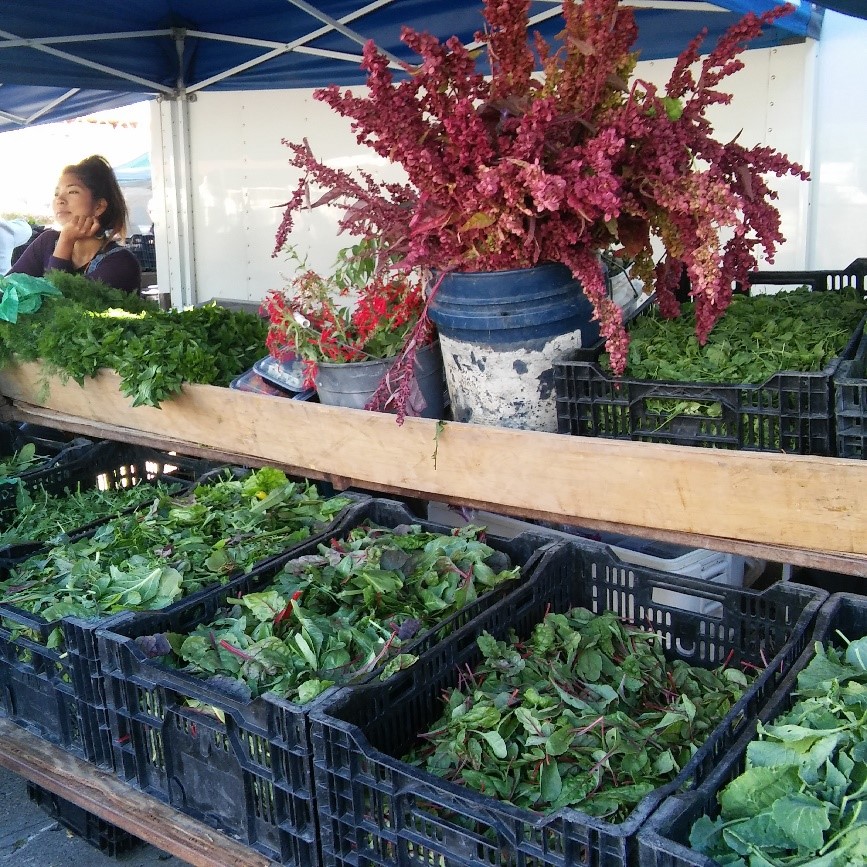It is a typical Saturday at the San Francisco Ferry Building Farmers Market for the sellers at the Heirloom Organics stand. There is an abundance of greens, herbs, and edible flowers on offer this particular day. The bright, alluring display of budding, burgundy orach leaves attract customers, as does the fragrant and freshly picked mint bouquets. The worker is comfortable and content in this space. Awaiting customers, she casually places her hand on her cheeks and smiles softly. The busy morning attending to regulars and chefs in search of the best ingredients for their menus has subsided, allowing the worker a moment of rest and contemplation.
This photograph was taken at the Ferry Building Farmers Market where I work every Saturdays selling greens and root vegetables for Heirloom Organics, a farm in Hollister, CA. The woman in this photograph is my co-worker. I don’t recall when I took this photograph; it was probably last spring when orach, also known as wild mountain spinach, is normally in season. I also see a crate of ancho cress on the top shelf, and ancho cress enjoys cooler, springtime weather. These small yet significant details help point to the time when this moment in the photograph may have occurred.
As with any photograph, there are many things that remain unseen. The space and environment beyond the vegetable stand and in front of the worker are unseen. Where is her gaze? What else is in this space? Who are the people in this space and how do they interact with her and the bounteous spread before them?
There were many layers of experiences of work that occurred to arrive at this image of neatly lined crates of greens, bunches of herbs along the center, and a seemingly serene worker. Much of it was physical labor, just before dawn setting up the stand. But most of it took place on the farm. Each collard, chard, kale, cress, mustard, and spinach leaf passed through the hands of a small crew of farmworkers only a day before. Upon harvesting the greens, they triple washed them, packed them into crates, which they then stacked into a refrigerated truck bound for San Francisco.
The U.S. Department of Labor estimates that there are nearly 3 million agricultural workers in the United States. Most farmworkers in the United States are foreign-born (73%). Among those who are foreign-born, more than half were born in Mexico (68%) and most have spent 15 or more years in the United States (55%). Most farmworkers are men (78%) and relatively young with an average age of 38 years old. Thirty percent of farmworker families in the United States live below the poverty level and on average, earn an annual income of $17,500-$19,999 making farmworker wages one of the lowest in the country (NAWS, 2014).
Despite the significant contributions of farmworkers to our food system and America’s economy, the farmworkers that planted, grew, and harvested all the greens in this image remain unseen, in more ways than one.
Sources:
U.S. Department of Labor (2014). Findings from the National Agricultural Workers Survey (NAWS) 2013-2014. Retrieved September 25, 2017 from https://www.doleta.gov/agworker/pdf/NAWS_Research_Report_12_Final_508_Compliant.pdf

Commentary on Rachel Tanur's Works: Guatemalan Poultry Market